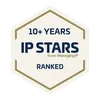Intellectual Property Infringement – How can you make sure you are not copying someone’s Intellectual Property? #
Making sure you are not copying someone’s Intellectual Property (IP) – that’s their patents, trademarks, designs etc. – is important for businesses who are keen to grow successfully. It helps avoid unnecessary expense in terms of cost and time in dealing with matters that could arise from an IP claim.
We’ve compiled a list of key steps you can take to make sure you are not copying someone else’s IP:
Step 1: Map your intellectual property landscape
#
Investing time to map the Intellectual Property landscape you are moving into will pay dividends in the future. There are a number of free resources available to do this. If you would like help with this, please don’t hesitate to get in touch for more information.
Step 2: Know who your competitors are#
It is important to know who your competitors are, even when they don’t appear to operate directly in your domestic or international markets.
Step 3: Know which fields your competitors are active in#
The more information your gather about your competitors the better prepared your will be. A search for IP owned by subject or product area will provide higher quality data to work with and use.
Step 4: Know the IP rights owned by your competitors#
Free databases are available to help you identify the key IP Rights owned by your competitors. These are available for both patents and trademarks.
Step 5: Conduct Prior Art Search (Patents) or Clearance Search (Trademarks)#
Both searches can prove very useful and are worth the investment. For more information on this (time, cost, etc.), please speak to your Patent or Trademark attorney.
Step 6: Set-up applicant watches
#
Ask your IP Attorney to set-up applicant watches. These watches are useful to keep up-to-date with competitor activities. Your IP advisor can search for particular activity in your chosen subject matter areas or search for new filings and new cases filed in the names of your key competitors or parent companies. The watches will help you monitor your competitors’ activities by alerting you when they move into areas specified in the watch criteria.
Step 7: Google!#
Using an online search engine can also be an informative way of gathering important information. It is not perfect, but it is a good place to start.
Being told about a possible infringement
#
If someone contacts you about a possible infringement, DON’T PANIC – STAY CALM and contact your patent or trademark attorney.
If you do receive a letter – sometimes called a “Letter before action” or a “Cease and desist” letter, please get in touch with your IP Attorney at the earliest opportunity. Timing is of the essence so that your IP Attorney has as much time as possible to look into the matter. Your IP Advisor will look at what is alleged, assess whether it is or not correct and then work on a solution for you. The solution isn’t always negative, for instance, a solution could come in the form of a co-existence agreement or perhaps a cross-licence. The aim of your IP Attorney will be to avoid conflict, potential legal action, future court proceedings and the costs involved in the same.
Get in touch!
For more information, please contact us if you think someone has copied your IP.





















